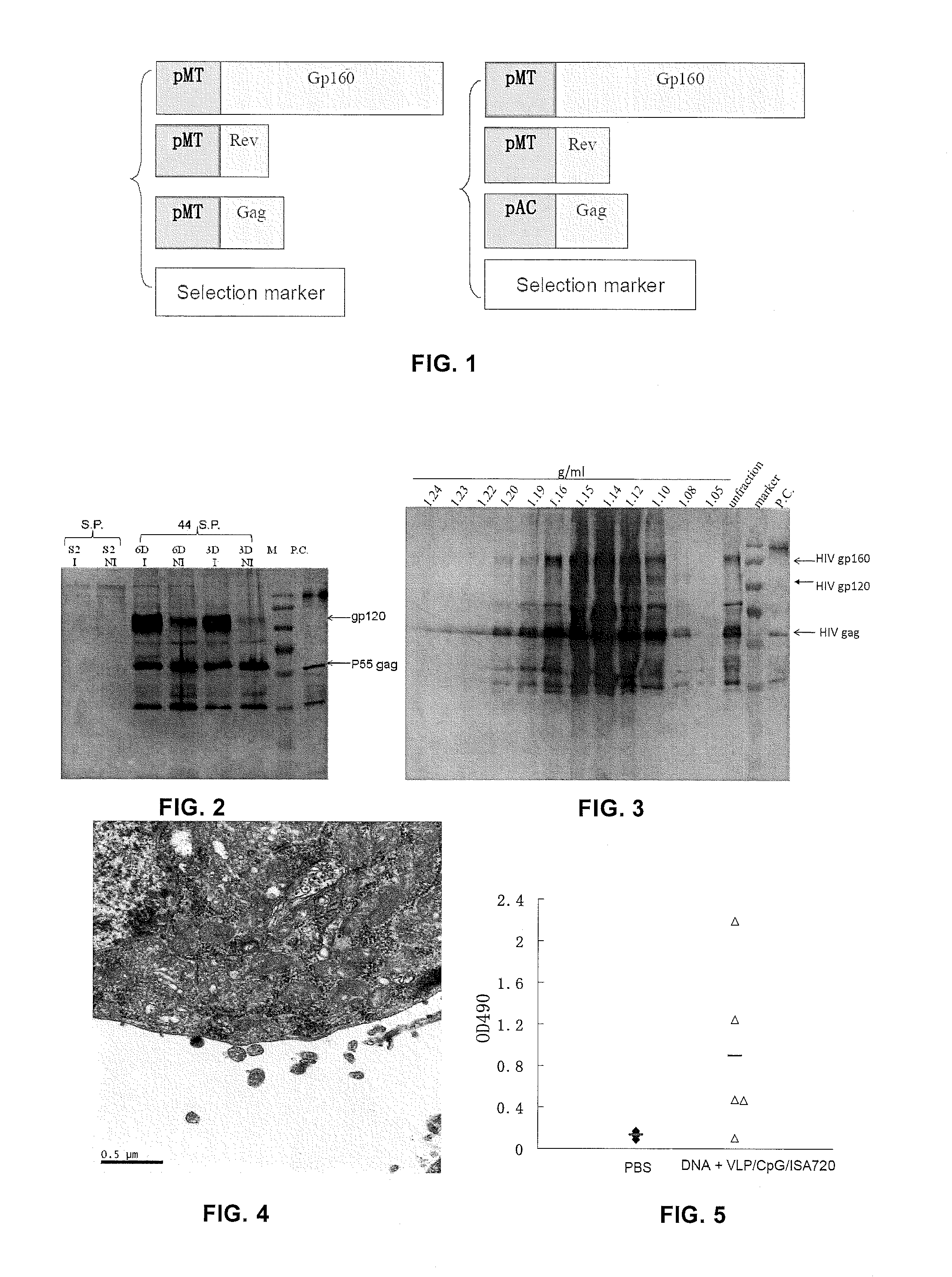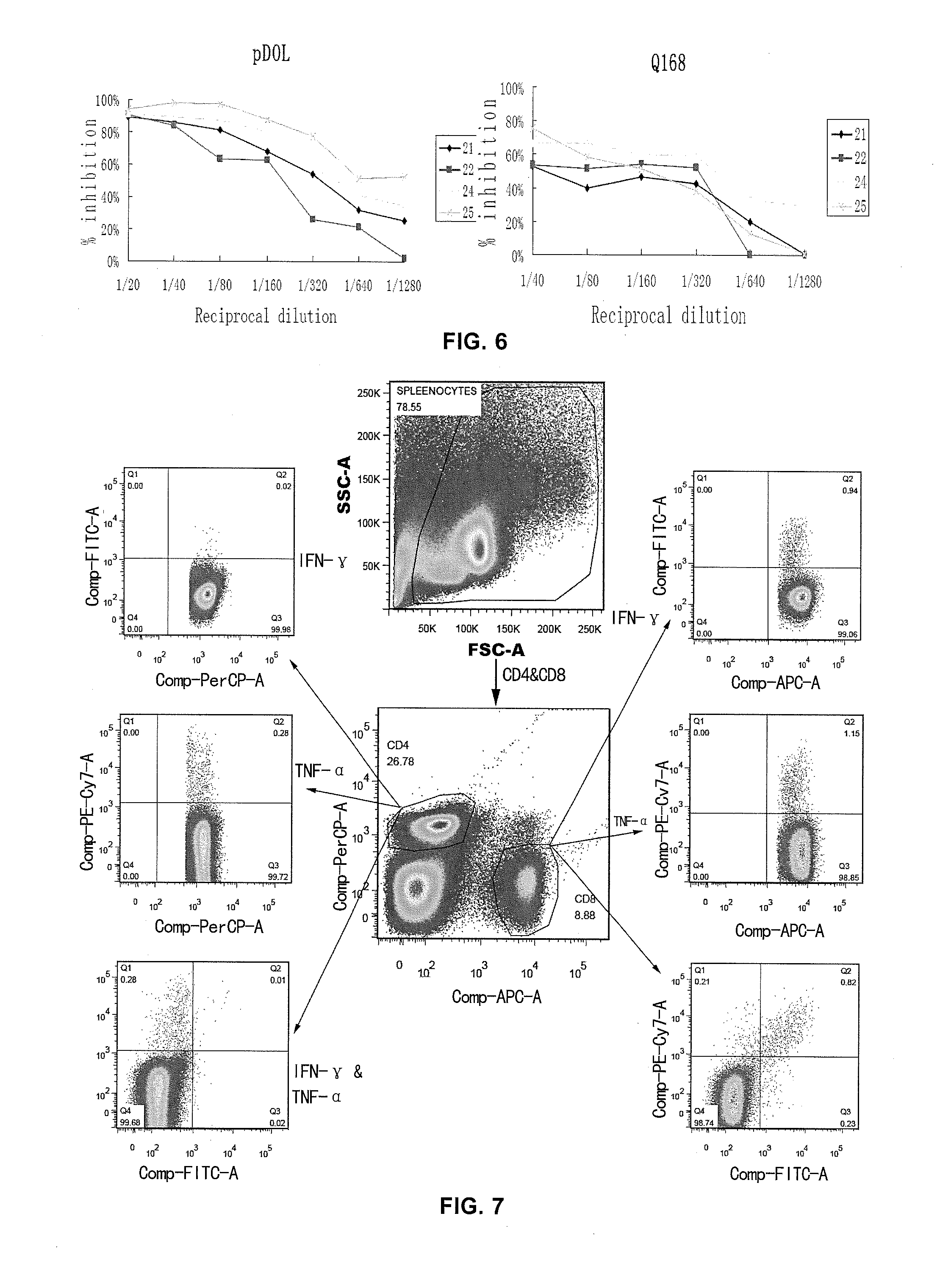Method for producing virus-like particle by using drosophila cell and applications thereof
- Summary
- Abstract
- Description
- Claims
- Application Information
AI Technical Summary
Benefits of technology
Problems solved by technology
Method used
Image
Examples
example 1
HIV VLP Production
[0151]FIG. 1 shows the plasmids used for preparing HIV VLP (pDOL). Then, Drosophila S2 cells were transfected with the plasmids as described above. 48 hours after transfection, hygromycin B was added to culture medium and cultured at room temperature without CO2 for 2 to 3 weeks until stably transfected cell colony appeared. Single-cell clones having the highest expression levels of gag protein and envelope protein were selected as VLP-producing cells.
[0152]Detect the expression of HIV-1 gag protein and envelope protein in cell lysates and cell culture supernatants of stably transfected cell lines with and without CdCl2 induction using Western blotting. FIG. 2 shows detection of HIV gp120 and gag expression in cell lysates and supernatants of S2 cells co-transfected with pMT-bip-HIVenv, pAC-HIVgag, pMT-HIVrev and pCoBlast, with and without CdCl2 induction. FIG. 3 shows properties of HIV-1 VLP detected by sucrose density gradient ultracentrifugation and Western blot...
example 2
Production of Influenza Virus VLP
[0161]To generate influenza virus VLP, the present inventors first compared the difference of the generated influenza virus VLP particles when influenza virus M1 protein and HIV-1 gag protein were used as core protein. Plasmid (pAC-M1) encoding influenza virus M1 protein inserted behind stable Ac5 promoter, and plasmids (pMT-bip-HA and pMT-bip-NA) encoding influenza virus HA and NA proteins inserted behind inducible MT promoter were constructed. As described above, S2 cells were co-transfected with these plasmids, i.e., pAC-M1, pMT-bip-HA, and pMT-bip-NA (used for forming HA-NA-M1 VLP); or pAC-HIVgag, pMT-bip-HA, and pMT-bip-NA (used for forming HA-NA-HIV-1 gag VLP), respectively, and a vector containing blasticidin resistance gene and the stably transfected S2 cells were selected. Then, the expression and assembly of the produced VLP were investigated.
[0162]FIG. 8 shows the expression of HA, NA, M1, and HIV-1 gag protein in cell lysates and cell cul...
PUM
| Property | Measurement | Unit |
|---|---|---|
| Electrical resistance | aaaaa | aaaaa |
| Immunogenicity | aaaaa | aaaaa |
| Antigenicity | aaaaa | aaaaa |
Abstract
Description
Claims
Application Information
 Login to View More
Login to View More - R&D
- Intellectual Property
- Life Sciences
- Materials
- Tech Scout
- Unparalleled Data Quality
- Higher Quality Content
- 60% Fewer Hallucinations
Browse by: Latest US Patents, China's latest patents, Technical Efficacy Thesaurus, Application Domain, Technology Topic, Popular Technical Reports.
© 2025 PatSnap. All rights reserved.Legal|Privacy policy|Modern Slavery Act Transparency Statement|Sitemap|About US| Contact US: help@patsnap.com



